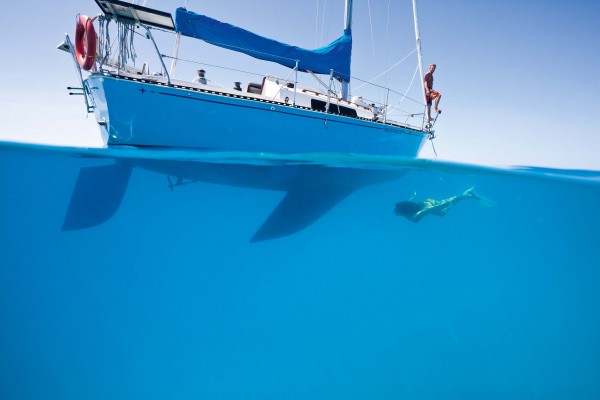We investigate the causes of keel failures and find some worrying reports of near-misses
Pantaenius claims handler Jonathan Reynolds gives us the insider’s view on keel safety and maintenance:
Keel studs and their retaining nuts and washers should be inspected visually every year for any signs of corrosion and, in particular, before and after any significant passage. Any sign of corrosion of the studs or signs of rust weeping at the hull to keel join, water ingress around the keel join, or loosening of the studs should be addressed immediately and, wherever possible, with the assistance of a qualified surveyor and/or a reputable repair yard. It is not generally necessary or advisable to draw the studs and lower the keel unless there is evidence of damage, corrosion or general loosening.
Certainly a yacht must be lifted from the water and visually inspected after any grounding, no matter how insignificant it might appear. A good insurance policy will provide cover for this and the cost will be accepted as a fair cost irrespective of whether or not damage is found. In our view, the policy excess should be waived in respect of the inspection and only applied if there is damage requiring repair. With most incidents of grounding there will be an element of point impact damage and there may be some consequential shock damage elsewhere. Sometimes the latter is the most damaging.
Check the engine too
After a grounding and inspection of the hull, it is always prudent to check the engine and generator mounts to ensure that none of them has become dislodged or broken. In more significant groundings the rig should be checked too. The engine is often the ‘get out of jail card’ in an emergency situation.
Bareboat charter or club/syndicate boats are often most at risk from skippers who may be reluctant to report groundings either for fear of being presented with a bill for repairs or simple embarrassment of owning up.
Neither, of course, is worth the risk of not adequately and diligently inspecting the yacht for any damage. We have encountered some instances where charter operators have ignored a grounding because there was insufficient time or opportunity to inspect the yacht before the next charter.
Insurers are consistently being presented with claims for grounding damage at year end when yachts are laid up ashore for the winter – damage is spotted during lift-out and is often put down to a light grounding at the start of the season. Think of the potential risk to the crew throughout the season!
It is our philosophy that every grounding should result in an immediate out-of-the-water inspection. All too often people take the cheap route and simply arrange to dive on the yacht. We do not condone this as acceptable for continued use of the vessel – it might give an owner momentary peace of mind, but in our view the vessel still needs to be hauled and inspected.
Good seamanlike practice
The modern matrix design of some light-displacement yachts gives us concern. We frequently encounter incidents where the keel structural matrix has been damaged and consequently moves independently of the hull skin. This is generally encountered after a grounding when only an in-water inspection has taken place. When the vessel is hauled ashore and the keel inspected while still in the slings, any twist or separation of the matrix bonding becomes evident.
It is important to inspect the hull to keel join with the keel studs/bolts in tension – ie with the vessel held in slings, rather than resting on her keel – when any gap or movement/damage will be more appreciable. Continued use of a yacht in which the keel matrix has separated is dangerous.
Not enough of our clients, in general, lift the soleboards and look around the keel root reinforcing structure – whether plywood webs bonded in, top hat section floors or frames and floors moulded integrally with the inner moulding – for detached secondary bonding and fractured frames. It’s not rocket science, but good seamanlike practice.
Any unreasonable delay in undertaking an inspection after grounding may result in an insurer rejecting a claim and hence this could leave an owner liable for any repairs or consequential legal liability in the event of a loss of life.
More on this topic: Keel safety self-help: what can we sailors do to feel more comfortable about the security of our keel? Matthew Sheahan has some advice…
This is an extract from a feature in Yachting World September 2014 issue
 If you enjoyed this….
If you enjoyed this….
Yachting World is the foremost international magazine for bluewater cruisers and offshore sailors. Every month we have practical features to help you plan and prepare to realise your sailing dreams.Build your knowledge month by month with a subscription delivered to your door – and at a discount to the cover price. See our latest offers now.





